Chris Hedges's Blog, page 115
October 31, 2019
Scorsese Closes the Book on the Mafia Genre
A World War II soldier hardened by killing hires on as a truck driver during peacetime. His efficiency in following orders—at the wheel and with a gun—serves the bosses of organized crime and organized labor.
In Martin Scorsese’s “The Irishman,” the soldier—a real-life guy named Frank Sheeran (Robert De Niro)—is a foot soldier for a Philadelphia crime family. His capo (Joe Pesci) has a brother, a mob lawyer (Ray Romano) who hooks Frank up with Teamster leader Jimmy Hoffa (Al Pacino), whom Sheeran loyally serves as a combination bodyguard, brother and buddy. And when the mob wants Hoffa whacked, who better to tap for the job than Sheeran?
That’s the rough idea of the film, but a summary cannot convey its power and profundity. Just when you think you’re watching a film portrait of a hit man, the scope of the movie gets bigger and bigger, building incrementally to a canvas the size of the United States. Scorsese’s epic is by turns ruefully funny, chilling and laced with deep regret as Sheeran tells his story to an unseen interviewer from a wheelchair in an assisted-living facility. As with “The Godfather” films, you don’t watch “The Irishman” so much as get implicated with its characters. In one sense, the movie is Sheeran’s confession, the audience his priests and judges.
In a larger sense, “The Irishman” is not simply Sheeran’s story. It’s a history of American masculinity from 1950 to the present, a gimlet-eyed chronicle of gimlet-eyed men shaped by World War II. They became men in the company of other men and define their manhood by their place in the unit or pack. They have wives and kids, sure. But for Sheeran, the Family inevitably takes precedence over family. The almost wordless rebuke of his daughter, Peggy (Lucy Gallina as a child and Anna Paquin as an adult), is as devastating as a death sentence.
There is an unsentimental Forrest Gump aspect to Sheeran’s story. He is frequently at the edges of or instrumental to historic events, from JFK’s election in 1960 to the botched Bay of Pigs invasion to famous political assassinations.
The source material is Charles Brandt’s “I Heard You Paint Houses,” an account of Sheeran not universally believed to be true. (The book’s title is code for contract killers whose bullets splatter walls with their victim’s blood.) Screenwriter Steven Zaillian (“Schindler’s List,” “Searching for Bobby Fischer”), the go-to writer for microclimates of mood and nuance and man, adapted the book, and does he ever deliver. As do cinematographer Rodrigo Prieto, with his Old Masters lighting, and editor Thelma Schoonmaker, whose unnerving rhythms make it impossible to look away from this 3.5-hour movie.
“The Irishman” is affecting on many levels, with the actors giving their most moving performances in years. De Niro and Pesci tread lightly, indicating emotion with a subtle dart of eye or purse of lips. Pacino brings the high volume and broad gesture, like an opera singer in the company of cat burglars.
(While I worried that the much-publicized “de-aging” visual effects used to make De Niro and Pesci mature from 30 to 60 would be intrusive, they were not. Nor were they terribly convincing. When the actors are supposed to look 30, their faces look as if someone ironed out the wrinkles via digital Botox. Still, the acting is so riveting that I didn’t care.)
Where “The Godfather” films marked the first chapter in the book on the modern mob, “The Irishman” has the last word. In the end, what do we know about this hit man? He is conscienceless, loved by no one, a tool used by men of power. He is no more feeling than a rifle or shiv. And that knowledge stabs us in the deepest recesses of our being.
If you want a more accurate account of what happened to Hoffa, read this—or this.
If you want the best movie made in a long, long time, see “The Irishman.” It opens in theaters today and will be available on Netflix on Nov. 27. No matter how large your home screen, watching it on Netflix would be like looking at a color slide of a masterpiece.

Carbon Capture Could Save the Planet
If the world is to avoid dangerous overheating, some climate scientists say, carbon capture and storage (CCS) is essential. But compared with other ways of tackling global heating, it is a method that is developing slowly.
Norway, though, one of the world’s biggest oil producers, has been successfully using carbon capture since 1996. Now, Norwegian scientists say, the rest of the world must learn to do so as quickly as possible, arguing that all large industrial plants could and should capture and store the carbon dioxide they produce before it reaches the atmosphere.
It is a bold claim. Many other scientists insist that CCS − relying on carbon removal and other forms of geo-engineering to bring the temperature down, instead of simply reducing greenhouse gas emissions − can never achieve what is needed, although one US team suggested three years ago that it might well be at least part of the answer.
Related Articles

The Trump Administration's Approach to the Environment Is Immoral
by

Environmentalists Risk Their Lives to Save the Planet
by
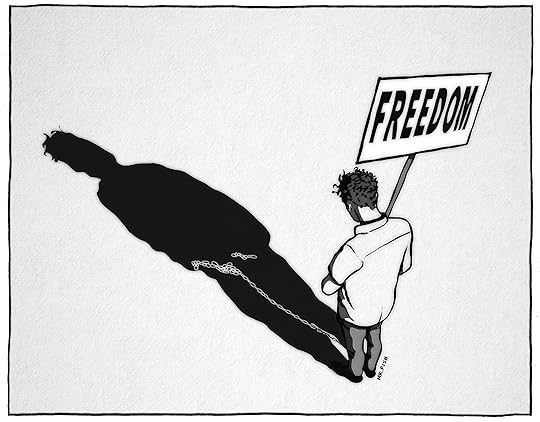
Saving the Planet Means Overthrowing the Ruling Elites
by Chris Hedges
But the Norwegian researchers, from the independent research organisation Sintef, believe they have the evidence to prove their case. As well as finding how to separate carbon dioxide from electricity production, steel and cement works, they have also developed a separate system, Bio-CCS. This extracts CO2 from the atmosphere and turns it into charcoal before burying it in farmland.
Sintef is working with the Norwegian oil industry and some of the other oil majors, including Shell and Total, that are increasingly under pressure to curb their emissions and prevent global average temperatures rising by more than 1.5°C above the pre-industrial level, the internationally agreed limit.
The Norwegians have so far disposed of 23 million tonnes of CO2, pumping it into brine-filled pores in sandstone, called saltwater aquifers, and sealing them with natural caprock, a relatively impervious layer of rock above an oil- or gas-bearing stratum.
The researchers say there is no choice but to adopt carbon capture and storage because turning off the world’s oil supplies immediately is unrealistic: “We cannot manage without CCS. The world must therefore undergo change on a scale we have never seen before, and this is urgent.”
The method of carbon capture developed at the Sintef research facility at Trondheim uses chemicals to bind the CO2 in the flue gases before it reaches the chimney and so prevents it reaching the atmosphere. This means steel, fertiliser and cement factories could reduce emissions to zero.
The next stage of the process is more expensive; the carbon has to be separated from the binding chemicals, a process achieved by heat. Costs are reduced if waste heat is used from the industrial processes that produced the carbon in the first place.
The recovered chemicals are then re-used to capture more carbon, and the carbon captured already is piped to a disposal site. The researchers say they know it works because they tested it at six pilot plants in Norway itself, Germany, Scotland and the US, trying 90 different chemical mixtures before finding the best.
Cost-Effective
They also found that the same method can be used to create hydrogen from natural gas, capturing the CO2 in the process. The hydrogen is emission-free.
Part of Sintef’s research has involved calculating the costs to global industry of capturing the carbon it produces – US$97 a tonne for coal-fired power stations. This, Sintef says, is far less than the cost to the planet of releasing the carbon into the atmosphere.
Carbon capture from steel and cement works costs less than this because they use waste heat from the plants.
The team have based their figures on the average cost for 600 coal-fired plants, each capturing one million tonnes of CO2 a year, and includes transport and storage costs. They have also tested and developed the best leak-proof pipelines for taking the gas to where it will be injected into the ground for storage.
Soil Improver
The cost varies between plants, depending partly on the distance to a suitable storage place, but the scientists say CCS is getting cheaper all the time because it is getting more efficient, and they expect the price will continue to fall.
Currently much of the research is being directed to finding suitable storage sites and making sure that once the carbon is injected into the storage reservoir it stays put.
The second method, Bio-CCS, is simpler and easier. Biological waste, wood chips or manure can be heated for 20 minutes to a temperature of between 500°C and 700°C in the absence of air and turned into charcoal. Bio-carbon, as it is called, is a good soil improver, and the plan is to produce it in small plants on Norwegian farms and spread it on the land. As long as it is not burned, it stays stored in the soil.
By using their simple methods the Norwegians believe that if 4,000 of their farms used the technology, half their agricultural emissions could be eliminated.

Democrats Push Impeachment-Rules Package Through House
WASHINGTON — Democrats rammed a package of ground rules for their impeachment inquiry of President Donald Trump through a sharply divided House Thursday, the chamber’s first formal vote in a fight that could stretch into the 2020 election year.
The tally was 232-196, with all Republicans against the resolution and just two Democratic defectors joining them: freshman Rep. Jeff Van Drew of New Jersey and 15-term veteran Rep. Collin Peterson of Minnesota, one of his party’s most conservative members. Both represent GOP-leaning districts.
The vote laid down the rules as lawmakers transition from weeks of closed-door interviews with witnesses to public hearings and ultimately to possible votes on whether to recommend Trump’s removal from office.
Related Articles

Impeach All the Presidents
by Maj. Danny Sjursen
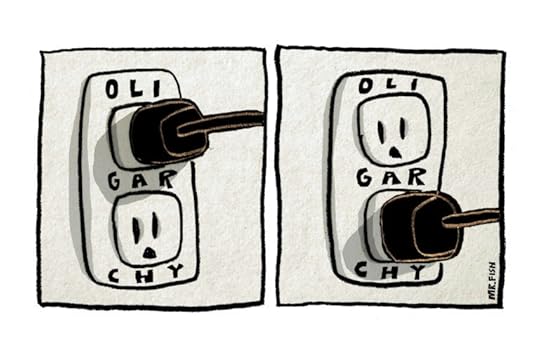
The Problem With Impeachment
by Chris Hedges
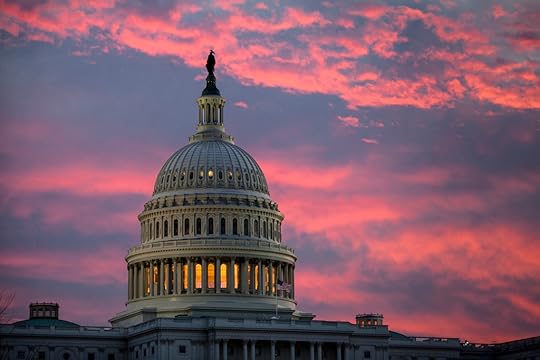
What Happens in the Senate if Trump Is Impeached?
by Bill Blum
The action also took on more than technical meaning, with each party aware that the impeachment effort looms as a defining issue for next year’s presidential and congressional campaigns.
The vote, which occurred on Halloween, drew a familiar Twitter retort from Trump: “The greatest Witch Hunt in American History!”
White House press secretary Stephanie Grisham accused House Speaker Nancy Pelosi and the Democrats of an “unhinged obsession with this illegitimate impeachment proceeding.”
During the debate, Democrats spoke of lawmakers’ duty to defend the Constitution, while Republicans cast the process as a skewed attempt to railroad a president whom Democrats have detested since before he took office.
“What is at stake in all this is nothing less than our democracy,” said Pelosi. Underscoring her point, she addressed the House with a poster of the American flag beside her and began her remarks by reading the opening lines of the preamble to the Constitution.
House Minority Leader Kevin McCarthy, R-Calif., said Trump had done nothing impeachable and accused Democrats of trying to remove him “because they are scared they cannot defeat him at the ballot box.”
No. 3 House GOP leader Steve Scalise, R-La., accused Democrats of imposing “Soviet-style rules,” speaking in front of a bright red poster depicting the Kremlin.
Independent Rep. Justin Amash of Michigan, who left the Republican Party earlier this year after saying he was open to considering whether Trump should be impeached, also backed the measure.
The investigation is focused on Trump’s efforts to push Ukraine to investigate his Democratic political opponents by withholding military aid and an Oval Office meeting craved by the country’s new president.
Democrats said the procedures — which give them the ability to curb the president’s lawyers from calling witnesses — are similar to rules used during the impeachment proceedings of Presidents Richard Nixon and Bill Clinton. Republicans complained they were skewed against Trump.
It is likely to take weeks or more before the House decides whether to vote on actually impeaching Trump. If the House does vote for impeachment, the Senate would hold a trial to decide whether to remove the president from office.
Both parties’ leaders were rounding up votes as Thursday’s roll call approached, with each side eager to come as close to unanimity as possible.
Republicans said a solid GOP “no” vote would signal to the Senate that the Democratic push is a partisan crusade against a president they have never liked.
Democrats were also hoping to demonstrate solidarity from their most liberal elements to their most moderate members. They argued that GOP cohesion against the measure would show that Republicans are blindly defending Trump, whatever facts emerge.
“It will show the other party has become the party of Trump. It’s really not the Republican Party any longer,” said Rep. Dan Kildee, D-Mich.
Republicans said they’d use the vote to target freshman Democrats and those from districts Trump carried in 2016. They said they would contrast those Democrats’ support for the rules with campaign promises to focus on issues voters want to address, not on impeaching Trump.
The House GOP’s campaign arm sent emails to reporters all but taunting some of those Democrats including freshman Rep. Chris Pappas, D-N.H. “Pappas wants to be a one-termer,” one said.
GOP leaders called the rules “Speaker Pelosi’s sham process designed to discredit the Democratic process” in their daily impeachment email to lawmakers.
Pelosi decided to have the vote following weeks of GOP claims that the inquiry was invalid because the chamber had not voted to formally commence the work.
The rules lay out how the House Intelligence Committee — now leading the investigation by deposing diplomats and other officials behind closed doors — would transition to public hearings.
That panel would issue a report and release transcripts of the closed-door interviews it has been conducting.
The Judiciary Committee would then decide whether to recommend that the House impeach Trump.
According to the rules for hearings, Republicans could only issue subpoenas for witnesses to appear if the entire panel approved them — in effect giving Democrats veto power.
Attorneys for Trump could participate in the Judiciary Committee proceedings. But in a bid for leverage, panel Chairman Jerrold Nadler, D-N.Y., would be allowed to deny “specific requests” by Trump representatives if the White House continued refusing to provide documents or witnesses sought by Democratic investigators.
The rules also direct House committees “to continue their ongoing investigations” of Trump.
Top Democrats think that language will shield their members from weeks of Republican complaints that the inquiry has been invalid because the House had not formally voted to begin that work.
Democrats have said there’s no constitutional provision or House rule requiring such a vote.
___
Associated Press writers Andrew Taylor and Lisa Mascaro contributed to this report.

White House Lawyer Rushed to Hide Transcript of Ukraine Call: Report
White House lawyer John Eisenberg reportedly rushed to hide the transcript of President Donald Trump’s July phone call with Ukraine’s leader on a highly classified server shortly after National Security Council official Lt. Col. Alexander Vindman—who testified before House impeachment investigators Wednesday—raised alarm about the conversation.
Citing anonymous officials familiar with Vindman’s account, the Washington Post reported late Wednesday that “Vindman told Eisenberg, the White House’s legal adviser on national security issues, that what the president did was wrong.”
After “scribbling notes on a yellow legal pad,” according to the Post, “Eisenberg proposed a step that other officials have said is at odds with long-standing White House protocol: moving a transcript of the call to a highly classified server and restricting access to it.”
Related Articles

Diplomat: Trump Linked Ukraine Aid to Demand for Probe
by

Ralph Nader: Trump's High Crimes Go Way Beyond Ukraine
by

'Multiple Whistleblowers' Could Blow the Lid off Trump-Ukraine Call
by
“The White House lawyer later directed the transcript’s removal to a system known as NICE, for NSC Intelligence Collaboration Environment, which is normally reserved for code-word-level intelligence programs and top-secret sources and methods,” the Post reported. “Former Trump national security officials said it was unheard of to store presidential calls with foreign leaders on the NICE system but that Eisenberg had moved at least one other transcript of a Trump phone call there.”
House impeachment investigators have asked Eisenberg to testify Monday. It is not yet clear whether the White House will attempt to bar him from participating.
“In light of this astonishing story, it is imperative that Eisenberg testify before Congress about his involvement in concealing the Ukraine affair and explain the other presidential call memorandum he moved to the codeword system and why,” said CNN legal analyst Susan Hennessey.
Not Giuliani. Not his personal lawyer. The *White House* lawyer. https://t.co/z1qxfQqATg
— Ken Tremendous (@KenTremendous) October 31, 2019
The Post‘s story was viewed as further evidence that the White House engaged in a widespread cover-up to suppress possibly illegal conduct by Trump, who pressured the Ukrainian president to launch an investigation into former Vice President Joe Biden.
As Common Dreams reported, Vindman told House impeachment investigators during his 10 hours of testimony Wednesday that the White House omitted key details from the rough transcript of Trump’s call that it released last month.
“For weeks Trump called the call record which showed he sought foreign influence in our elections a ‘perfect transcript,'” said Rep. Don Beyer (D-Va.) in response to Vindman’s testimony. “It was a doctored transcript. The White House cut out some of his words, refused to restore them, and hid the transcript in a secure server.”

Max Blumenthal’s Arrest Exposes the Limits of Press Freedom
Grayzone editor Max Blumenthal, a prominent journalistic critic of US policy toward Venezuela, was arrested by DC police on Friday, October 25, in connection with a protest at the Venezuelan embassy, and held incommunicado. But if you rely on corporate media, or even leading “press freedom” groups, you haven’t heard about this troubling encroachment on freedom of the press.
Blumenthal is a bestselling author whose work has appeared in such publications as the New York Times, CJR, The Nation and Salon. DC police arrested him at his home on a five-month-old arrest warrant, charging him with simple assault for his attempt to deliver food to the besieged Venezuelan embassy; he was held for two days, and for the first 36 hours was not allowed to speak with a lawyer. (In an interview with FAIR, Blumenthal noted that keeping arrestees—generally poor and African-American—from speaking with lawyers or family is par for the course in the DC criminal justice system.) As of this writing, there has been no mention of Blumenthal’s arrest in outlets like the New York Times, Washington Post and Reuters that constantly publish Venezuela-related content, or by the big “press freedom” NGOs.
When freelance US journalist Cody Weddle was detained in Venezuela for 12 hours, it made headlines in the New York Times (3/6/19), Washington Post (3/6/19), Miami Herald (3/6/19), USA Today (3/6/19), Guardian (3/6/19), UK Telegraph (3/6/19), NPR (3/10/19), ABC (3/9/19) and Reuters (3/7/19). That’s not exhaustive, but you get the picture.
Related Articles

The Deadly Mistake Corporate Media Keep Repeating
by
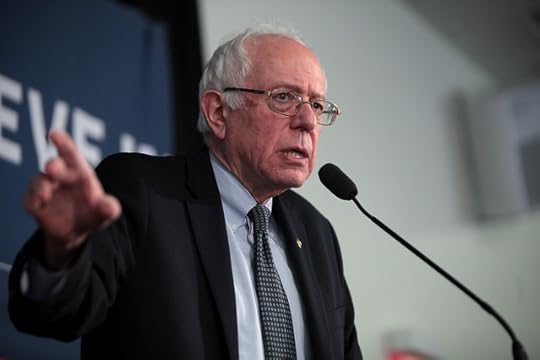
Bernie Sanders Has a Plan to Save American Journalism
by

The Rot of American Journalism Runs Deep
by Chris Hedges
In Weddle’s case, the human rights industry also responded immediately. Jose Miguel Vivanco of Human Rights Watch tweeted about Cody Weddle’s detention, as did Reporters without Borders (RSF). The Committee to Protect Journalists (CPJ) also put out a statement immediately (3/6/19). There has been nothing from them about Blumenthal.
The two-hour detention of Univision’s Jorge Ramos in Venezuela was likewise big news. In fact, RSF was outraged that Cody Weddle’s detention happened “barely a week” after the Ramos incident.
Nobody should have a problem with Weddle’s arrest or Ramos’ detention getting the widespread attention they did. (The content in the reports about Venezuela is a separate issue.) What should anger anybody who isn’t consumed with hypocrisy is the point Ben Norton, writing in Grayzone (10/28/19), made about Blumenthal’s arrest:
If this had happened to a journalist in Venezuela, every Western human rights NGO and news wire would be howling about Maduro’s authoritarianism. It will be revealing to see how these same elements react to a clear-cut case of political repression in their own backyard.
Blumenthal’s arrest is another example of the legal harassment of US government critics, including WikiLeaks’ Julian Assange and whistleblower Chelsea Manning–whose plights have similarly been neglected by Western media and NGOs that claim to support press freedom (FAIR.org, 11/3/18, 4/1/19).
Several months ago, activists invited by the Venezuela government stayed in the Venezuelan embassy in Washington, DC, for over a month until they were finally evicted by police on May 24. The presence of the activists delayed a takeover of the embassy by representatives of the Trump-appointed Venezuelan government-in-exile led by Juan Guaidó. The majority of the world’s governments do not recognize Guaidó; that was dramatically highlighted on October 17 when Venezuela’s was voted onto the UN Human Rights Council despite US “lobbying” (i.e., bribes and threats).
Nevertheless, Trump’s recognition of Guaidó in January 2019 was the excuse for intensifying economic sanctions that had already killed thousands of people by the end of 2018. (Incidentally, Jorge Ramos’ two-hour “detention” also received more Western media attention than the study showing the already-lethal impact of Trump’s sanctions—FAIR.org, 6/14/19).
With the complicity of DC police, Guaidó supporters tried to block food from being delivered to the embassy during the standoff with the activists. At one point, 78-year-old Jesse Jackson Sr. had to scuffle with Guaidó supporters to deliver food. The DC police were clearly intent on doing as little as possible, even with an elderly, high-profile visitor trying to make a delivery. Former Green Party candidate Ajamu Baraka (age 66) was forced to act as Jackson’s bodyguard, thanks to the aggression of Guaidó supporters and the inaction of DC police.
Norton reported:
Court documents indicate the false charge of simple assault stems from Blumenthal’s participation in a delivery of food and sanitary supplies to peace activists and journalists inside the Venezuelan embassy on May 8, 2019.
Others attempting to deliver food were hit with charges months ago. Activist Ben Rubenstein and Veterans for Peace president Gary Condon (age 72) were beaten by police during the standoff for trying to toss a cucumber to activists inside the embassy. In fact, the warrant against Blumenthal was months old, and apparently initially rejected. Blumenthal explained:
If the government had at least told me I had a warrant I could have voluntarily surrendered and appeared at my own arraignment…. Instead, the federal government essentially enlisted the DC police to SWAT me, ensuring that I would be subjected to an early morning raid and then languish in prison for days without even the ability to call an attorney.
The lack of coverage of his arrest “is totally consistent with media coverage of the siege of the Venezuelan embassy,” Blumenthal told FAIR. “The violence, racism, sexism of the Venezuelan opposition—none of it was reported in the mainstream US press.” Aside from alternative outlets like Democracy Now! (10/30/19) and the World Socialist Website (10/30/19), one had to turn to Russian state media to find coverage of Blumenthal’s arrest. A Sputnik article (10/30/19) about the case cited damaging exposés Grayzone has published about Guaidó inner circle, one of which recently led to the resignation of right-wing economist Ricardo Hausmann from Guaidó’s shadow administration.
Here’s an idea for media outlets and NGOs concerned about the appeal of Russian public relations efforts: start doing your jobs by holding your own authoritarian politicians and politicized police forces to account.

The ‘Saving Grace’ of Donald Trump’s Presidency
Let us stipulate at the outset that Donald Trump is a vulgar and dishonest fraud without a principled bone in his corpulent frame. Yet history is nothing if not a tale overflowing with irony. Despite his massive shortcomings, President Trump appears intent on recalibrating America’s role in the world. Initiating a long-overdue process of aligning U.S. policy with actually existing global conditions just may prove to be his providentially anointed function. Go figure.
The Valhalla of the Indispensable Nation is a capacious place, even if it celebrates mostly white and mostly male diversity. Recall that in the eighteenth century, it was a slaveholding planter from Virginia who secured American independence. In the nineteenth, an ambitious homespun lawyer from Illinois destroyed slavery, thereby clearing the way for his country to become a capitalist behemoth. In the middle third of the twentieth century, a crippled Hudson River grandee delivered the United States to the summit of global power. In that century’s difficult later decades, a washed-up movie actor declared that it was “morning in America” and so, however briefly, it seemed to be. Now, in the twenty-first century, to inaugurate the next phase of the American story, history has seemingly designated as its agent a New York real estate developer, casino bankruptee, and reality TV star.
In all likelihood, George Washington, Abraham Lincoln, Franklin Delano Roosevelt, and Ronald Reagan would balk at having Donald Trump classified as their peer. Yet, however preposterously, in our present moment of considerable crisis, he has succeeded them as the nation’s Great Helmsman, albeit one with few ideas about what course to set. Yet somehow Trump has concluded that our existing course has the United States headed toward the rocks. He just might be right.
Related Articles

America’s War on America
by Eric Ortiz

The Only Solution to America's Political Crisis
by Paul Street
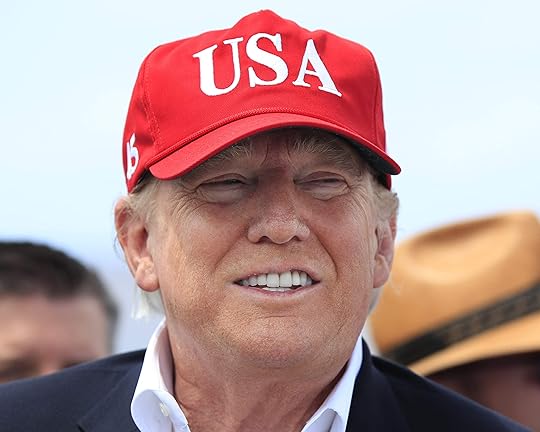
There Is Only One Superpower Left, and It’s Not the U.S.
by Robert Scheer
“Great nations do not fight endless wars.” So the president announced in his 2019 State of the Union Address. Implicit in such a seemingly innocuous statement was a genuinely radical proposition, as laden with portent as Lincoln’s declaration in 1858 that a house divided cannot stand. Donald Trump appears determined to overturn the prevailing national security paradigm, even if he is largely clueless about what should replace it.
Much as Southerners correctly discerned the import of Lincoln’s veiled threat, so, too, have Trump’s many critics within the national security apparatus grasped the implications of his insistence that “endless wars” must indeed end. In the unlikely event that he ever delivers on his campaign promise to end the conflicts he inherited, all the claims, assumptions, and practices that together define the U.S. national security praxis will become subject to reexamination. Tug hard enough on this one dangling thread — the wars that drag on and on — and the entire fabric may well unravel.
The Decalogue Plus One
In other words, to acknowledge the folly of this country’s endless wars will necessarily call into question the habits that people in and around Washington see as the essence of “American global leadership.” Prominent among these are: (1) positioning U.S. forces in hundreds of bases abroad; (2) partitioning the whole planet into several contiguous regional military commands; (3) conferring security guarantees on dozens of nations, regardless of their ability to defend themselves or the values to which they subscribe; (4) maintaining the capability to project power to the remotest corners of the earth; (5) keeping in instant readiness a “triad” of nuclear strike forces; (6) endlessly searching for “breakthrough technologies” that will eliminate war’s inherent risks and uncertainties; (7) unquestioningly absorbing the costs of maintaining a sprawling national security bureaucracy; (8) turning a blind eye to the corrupting influence of the military-industrial complex; and easily outpacing all other nations, friend and foe alike, in (9) weapons sales and (10) overall military spending.
Complementing this Decalogue, inscribed not on two tablets but in thousands of pages of stupefyingly bureaucratic prose, is an unwritten eleventh commandment: Thou shalt not prevent the commander-in-chief from doing what he deems necessary. Call it all D+1. In theory, the Constitution endows Congress with the authority to prevent any president from initiating, prolonging, or expanding a war. In practice, Congress has habitually deferred to an increasingly imperial presidency and treated the war-powers provisions of the Constitution as non-binding.
This Decalogue-plus-one has been with us for decades. It first emerged during the early phases of the Cold War. Its godfathers included such distinguished (if today largely forgotten) figures as Paul Nitze, principal author of a famously unhinged policy paper known as NSC-68, and General Curtis LeMay, who transformed the Strategic Air Command into a “cocked weapon” capable of obliterating humankind.
During the 1960s, better-dead-than-Red began to fall from favor and a doctrine of “flexible response” became all the rage. In those years, as an approach to waging, and therefore perpetuating the Cold War, D+1 achieved maturity. At that very juncture, the search for fresh thinking to justify existing policies vaulted the likes of Robert McNamara and Maxwell Taylor into positions of authority as secretary of defense and chairman of the Joint Chiefs of Staff.
The Vietnam War put the American military establishment’s capacity for flexibility to the test. That test did not go well, with Secretary McNamara and General Taylor prominent among the officials whose reputations did not survive. Remarkably, however, amid the carnage of that war, D+1 did survive all but unscathed. Vietnam was surely a debacle, but as long as the Cold War persisted, asking first-order questions about the basic organization of “national security” appeared just too risky. So the Decalogue emerged with hardly a scratch. Notwithstanding the disappointing presidencies of Lyndon Johnson and Richard Nixon, so, too, did the Eleventh Commandment.
 More striking still, even after the fall of the Berlin Wall, D+1 persisted. Thirty years ago this month when the Cold War ended, everyone agreed that a new era of global affairs was dawning. The Soviet Union, the threat that had prompted the creation of the Decalogue, had vanished. Yet without missing a beat, a new generation of Nitzes and LeMays, McNamaras and Taylors devised an altogether different rationale for preserving their predecessors’ handiwork.
More striking still, even after the fall of the Berlin Wall, D+1 persisted. Thirty years ago this month when the Cold War ended, everyone agreed that a new era of global affairs was dawning. The Soviet Union, the threat that had prompted the creation of the Decalogue, had vanished. Yet without missing a beat, a new generation of Nitzes and LeMays, McNamaras and Taylors devised an altogether different rationale for preserving their predecessors’ handiwork.
That new rationale was nothing if not expansive. During the Cold War, the overarching purpose of D+1 had been to avert the ultimate disaster of Armageddon. Its revised purpose was to promote the ultimate goal of remaking the world in America’s image. With a “sole superpower” now presiding over the international order, D+1 offered a recipe for simultaneously cementing permanent U.S. primacy and securing the universal triumph of American values. So, at least, members of an intoxicated foreign policy elite persuaded themselves.
Yet in the wake of the Cold War came not peace and harmony but unprecedented U.S. military activism. Here was the common theme of the otherwise disparate presidencies of George H.W. Bush, Bill Clinton, George W. Bush, and Barack Obama. During the quarter-century that elapsed between the fall of the Berlin Wall and the election of Donald Trump, the United States intervened in or attacked Panama, Iraq, Somalia, Haiti, Bosnia, Kosovo, Afghanistan, Sudan, Afghanistan (again), Iraq (again), Libya, Somalia (again), Yemen, Syria, several West African nations, and, briefly, Pakistan. And given a presidential preference for employing Special Operations forces on highly classified missions, that list is almost surely incomplete. Simply put, reticence regarding the use of force vanished.
As for the Eleventh Commandment, it now achieved a status comparable to the doctrine of papal infallibility. After 9/11, Congress quickly passed an open-ended Authorization to Use Military Force (AUMF), empowering the president “to take action to deter and prevent acts of international terrorism against the United States.” Of course, “terrorism,” as we are frequently reminded by the likes of Benjamin Netanyahu, Vladimir Putin, and Recep Tayyip Erdogan is very much in the eyes of the beholder. In effect, Congress had simply handed the commander-in-chief a blank check.
That AUMF became law on September 18, 2001, following a unanimous vote in the Senate and with only a single member dissenting in the House of Representatives. In the 18 years since, it has shown both remarkable durability and elasticity. Best illustrating its durability have been the wars launched under its auspices. Best illustrating its elasticity was Barack Obama’s “disposition matrix,” a secret procedure devised by his administration empowering him to order the killing of just about anyone anywhere on the planet deemed to pose a threat to the United States. All of this transpired with the cool deliberation and thorough consultation that was an Obama signature. Acting pursuant to the provisions of that AUMF, in other words, Obama codified assassination as an integral component of U.S. policy. In Washington, war thereby became a permanent undertaking that recognized no boundaries.
In or Out? Old or New?
Read the papers or watch cable news and you might conclude that the pivotal issue of our moment is the fate of Syria’s Kurds, with the United States military deemed uniquely responsible for ensuring their wellbeing. Yet while such a conclusion may play well with our troubled consciences — and troubled they certainly should be — it is radically misleading.
True enough, Trump’s abrupt abandonment of the Kurds qualifies as cruel, callous, and immoral. It also ranks as only the latest in a long string of such American betrayals, as various Native American tribes, Chinese Nationalists, Cuban exiles, South Vietnamese, and prior generations of Kurds (among others) can testify. So Trump has not exactly broken with past precedent.
More to the point, the matter at hand relates less to the Kurds than to a far larger question: Should the United States perpetuate the military enterprise commonly but misleadingly referred to as the “global war on terrorism?” Or should the United States recognize that this so-called GWOT has failed and consider a different approach to policy? Given that the GWOT represents D+1 applied to the Greater Middle East, “different” implies a wholesale reexamination of basic national security policy. It’s that prospect that worries the foreign policy establishment.
With the GWOT’s 20th anniversary now within hailing distance, we are in a position to evaluate just what that war has actually achieved. Honest differences of opinion may be possible, but in my judgment the results rank somewhere between disappointing and catastrophic. This much is certain: we have not won and victory is nowhere in sight.
Granted, Iraq’s Saddam Hussein is gone, as is Libya’s Muammar Gaddafi, both of them guilty of terrible crimes (although innocent of any direct involvement in 9/11). For the moment at least, the repressive Taliban do not rule in Kabul. And Osama bin Laden and Abu Bakr al-Baghdadi are dead. Proponents of the GWOT and of D+1 can point to these as positive achievements.
Yet widen the aperture slightly and the outcome appears less impressive. George W. Bush’s much-ballyhooed Freedom Agenda came to naught. Regime change in Kabul, Baghdad, and Tripoli produced not liberal democracy but chronic instability, pervasive corruption, and endemic violence. In Afghanistan, the Taliban never admitted defeat and today threaten the Western-installed Afghan government. Rather than affirming American military mastery and benign intentions, the reckless and illegal invasion of Iraq, advertised under the banner of Operation Iraqi Freedom, became a gift to our adversaries. If anyone can be said to have won the Iraq War, that honor must surely belong to the Islamic Republic of Iran. Worse still, by upending the existing regional order, U.S. forces created a power vacuum that facilitated the emergence of new terrorist movements like ISIS.
America’s ongoing post-9/11 wars deserve to be called “endless” because, despite contributing to hundreds of thousands of deaths and squandering trillions of dollars over the course of many years, the United States has come nowhere close to fulfilling its declared political aims. The plight of the Kurds in Syria offers a small but telling illustration of the magnitude of that failure.
Now the president of the United States, acting pursuant to the authority granted him by the Eleventh Commandment, says he wants to call it quits. It’s like Adam in the Garden of Eden: the one thing he’s forbidden to do, he does — or in Trump’s case makes a show of intending to do at least.
In response, in a show of near-unanimity Democratic and Republican defenders of the Decalogue Plus One insist that President Trump may not do what he declares himself intent on doing. Recall that George W. Bush’s doctrine of preventive war — sometimes disguised as “anticipatory self-defense” — elicited only modest opposition at best, largely along partisan lines. Much the same can be said of Barack Obama’s self-appointment as assassin-in-chief. But Donald Trump’s declared intention to withdraw U.S. troops from Syria as a preliminary step toward reducing our regional military presence has elicited bipartisan condemnation expressed in the strongest terms.
Senate Majority Leader Mitch McConnell, typically the president’s most stalwart defender, took to the pages of the Washington Post to denounce Trump’s decision in no uncertain terms. Riddled with half-truths and hyperbole, his op-ed qualifies as a model of “fake news.” Yet credit McConnell with this much: he understands that, in the dispute between Trump and the foreign policy establishment, the fate of Syria’s Kurds rates as no more than incidental.
The real issue, according to McConnell, is preserving “the post-World War II international system” that, he asserts, “has sustained an unprecedented era of peace, prosperity, and technological development.” Furthermore, having created that system, the United States remains “its indispensable nation,” a phrase introduced by Madeleine Albright and Bill Clinton in the early 1990s. Preserving that system’s benefits requires keeping faith with the Kurds, maintaining the U.S. military presence throughout the Middle East, and above all preserving the established framework of national security policy. In short, compliance with the Decalogue is mandatory. Even (or especially) presidents must obey.
Now, if you believe that the world we live in today does not differ in any significant way from the one that existed in the wake of World War II, McConnell’s argument might just possess some merit. Yet back then, the American economy led the pack in every conceivable measure. America’s European allies had been ravaged by war and desperately needed U.S. assistance. Both they and the defeated Axis powers, Germany and Japan, appeared vulnerable to the siren song of Communism.
To some observers, the Soviet Union appeared intent on taking over the world. China was poor, weak, backward, and divided. Imperial powers like Great Britain, France, and the Netherlands still clung to the illusion that they could keep a lid on demands for national self-determination in South and Southeast Asia, the Middle East, and Africa. Nuclear weapons offered a source of reassurance rather than concern — apart from the United States no one had them. Finally, that a climate crisis attributable to human activity might one day cause grievous harm on a planetary scale was literally beyond imagining.
Time has rendered every bit of this inoperative. McConnell’s “post-World War II international system” is now a fantasy about as relevant to contemporary reality as belief in the tooth fairy.
In what may be the sole redeeming feature of his otherwise abysmal presidency, Trump appears determined to blow the whistle on this charade. Sadly, his efforts do not extend much beyond making noise. Even the troop withdrawals that he announces with such fanfare tend to result in little more than repositioning within the region rather than redeployment back to the United States. Worse still, the motly band of mediocrities who surround the president consists almost entirely of believers in D+1. In his impulsive and ignorant way, Trump wants change; they oppose it.
As a result, diplomatic initiatives that might actually open a pathway to ending endless wars — negotiating the restoration of normal diplomatic relations with Tehran, for example, or curtailing weapons sales (and giveaways) to nations that use U.S.-manufactured arms to create mayhem, or demonstrating leadership by declaring a no-first-use policy on nuclear weapons — don’t even qualify for discussion. So Trump is left to flail about on his own, haplessly posing legitimate questions that he is incapable of answering.
The fears of the Decalogue’s defenders are not misplaced: Syria is the loose tip of a dangling thread. Give that thread a good yank and the entire moth-eaten fabric of U.S. national security policy just might become undone. Yet it will take someone with greater determination, consistency, and strength of character than Donald Trump to perform this necessary task.

CIA-Trained Afghan Forces Behind War Atrocities, Report Finds
ISLAMABAD — Heavily armed men burst into the home in the middle of night, hustling four brothers into separate rooms, their hands bound. Afghan special forces then shot them in the head and heart. The operation, the CIA-trained Afghan unit said, targeted Islamic State militants in a remote region of eastern Nangarhar Province.
In reality, the raid took place in the province’s capital of Jalalabad, within earshot of Justice Ministry offices. In an interview with The Associated Press, the family said the dead brothers included a school teacher and an assistant to a member of Afghanistan’s parliament. The truth of their deaths was eventually revealed by local and international media and the country’s intelligence chief, Masoom Stanikzai, was forced to resign.
But that’s not enough, says Human Rights Watch in a new report released Thursday documenting what it says are mounting atrocities by U.S.-backed Afghan special forces and rising civilian deaths by both American and Afghan forces. It calls for an investigation into whether the U.S. has committed war crimes in Afghanistan.
Related Articles

The Illegal CIA Operation That Brought Us 9/11
by Robert Scheer

The CIA’s Masterful Use of Fake News
by

Cronyism and Corruption Gave Us Today's CIA
by
The report says U.S.-led peace talks to end the 18-year-old war have omitted addressing the fate of the Afghan special forces that work “as part of the covert operations of the Central Intelligence Agency.” The report suggests either disbanding them or bringing them under the control of the Defense Ministry.
“These troops include Afghan strike forces who have been responsible for extrajudicial executions and enforced disappearances, indiscriminate airstrikes, attacks on medical facilities, and other violations of international humanitarian law, or the laws of war,” it says.
Speaking with The Associated Press on condition of anonymity, several Afghan, Taliban and U.S. officials, including some who are involved in trying to resuscitate peace talks, said the Taliban won’t agree to reduce attacks without a reduction in violence from the U.S. and Afghan side.
President Donald Trump ended negotiations with the Taliban over what he said was the insurgents’ unacceptable level of violence.
According to HRW and several U.N. reports, Afghan special operations units are now partly responsible for rising civilian deaths and rights abuses. They operate with seeming impunity under Afghanistan’s intelligence agency, the National Security Directorate, and hold nondescript names like Unit 01 or Khost Protection Forces.
HRW’s report, the culmination of a nearly two-year investigation, documented instances of families terrorized by night raids, summary executions and disappearances of people, some of whom are never heard from again. In preparing the report, researchers interviewed 39 Afghans directly impacted by offenses and several witnesses in nine different provinces.
The report tells of raids in Zurmat in eastern Paktia Province. Witnesses said Afghan and U.S. strike forces blew open the door of one home and shot dead four men as the family watched. In a second house, three shopkeepers and a guest, all home for a holiday, were shot and killed, said a witness. In a third incident in Zurmat, a religious teacher and two construction workers were killed.
Quoting the Afghanistan Analysts Network, an independent research organization, the report said the three brothers operated a shop in the center of the city of Ghazni.
In southern Kandahar province in March, an Afghan strike force arrived in Panjwai in the night and took away two men. One has not been heard from since. A few weeks later in a nearby village, witnesses said a 60-year-old school principal was shot and killed by the strike force after separating him from the women in his household. The body was left in the courtyard.
The incidents prompted demonstrations by local residents who complained to researchers: “Why are we always being killed by them? What’s our mistake?”
Human Rights Watch shared its findings with both the U.S. and Afghan authorities.
Kaber Aqmal, spokesman for the National Security adviser, refused to respond to the report directly but said “the Afghan government is doing its best to safeguard lives of the Afghan civilians, we are looking for all those possible ways to avoid civilian casualties.” He blamed the casualties on Taliban insurgents.
The U.S. military, without addressing specific cases, blamed the suffering of civilians on Taliban, Islamic State and al-Qaida fighters and called the Taliban violence “pointless.” The U.S. says it holds itself to a higher standard of accountability than IS or the Taliban.
“The battlefield is complex_the fighting is in crowded cities and in populated villages,” the U.S. military said in a response included in HRW’s report. “Our challenges are immense because we face enemies who do not wear uniforms, who hide among women and children, and who use lies about the death of civilians to try and check our effectiveness.”
HRW Associate Asia Director Patricia Gossman, the report’s author, said the U.S. has failed to investigate the “raid incidents” by Afghan forces and its probes into civilian airstrike deaths have been “shockingly deficient.”
The U.S. has taken a more aggressive approach to the conflict since 2017, according to the report. It quotes Secretary of State Mike Pompeo who said the CIA “must be aggressive, vicious, unforgiving, relentless.”
The Human Rights Watch report also called for an investigation into allegations that U.S. military personnel were with Afghan forces when possible war crimes were committed.
Previously, the U.S. has flatly denied any accusation of war crimes. It rebuked the International Criminal Court for even suggesting an investigation and denied one of its prosecutor’s a U.S. visa. The ICC later stated it would not investigate war crimes allegations in Afghanistan by any party to the conflict, including America.
HRW is seeking an investigation, though it did not specify what organization should carry out the probe.
___
Associated Press writer Rahim Faiez in Kabul contributed to this report.

Let’s Nationalize Our Public Utilities
Right now, thousands of Californians are fleeing raging wildfires, while millions sit in the dark. And for-profit utilities may be to blame.
Pacific Gas & Electric—a private, for-profit utility in the state—has admitted that its equipment likely caused 10 wildfires this year alone. To avoid further damage, the utility has been shutting off its customers’ power when weather conditions cause increased fire danger.
Will this lower the risk of wildfires? Maybe. It will also leave blacked out hospitals choosing whether to refrigerate their vaccines or keep their medical records online.
Related Articles
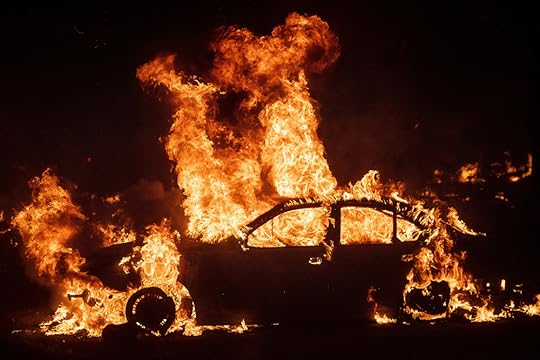
California's Rich Are Buying Their Own Firefighters
by Ilana Novick
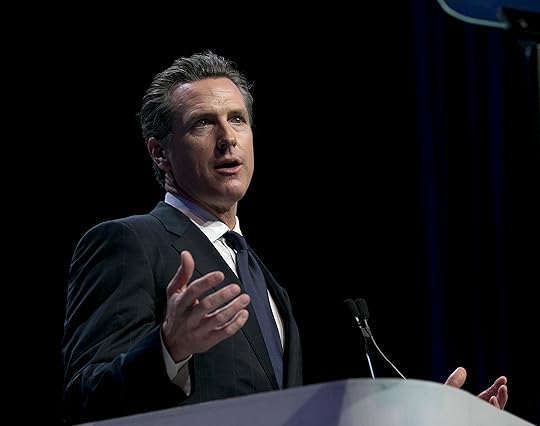
California Utility Faces Gripes Over Deliberate Blackouts
by
PG&E Put Profits Over Wildfire Safety, Judge Says
by
As Vox environmental reporter David Roberts put it, giving customers a choice between blackouts or fires is a failure.
A popular theory says that businesses must be “efficient” in order to survive in a competitive marketplace. By contrast, the government—without such market pressure—is naturally “inefficient.”
But even in the best cases, for-profit utilities with state-sanctioned monopolies are not functioning in a competitive marketplace. And unlike public utilities, which simply have to cover the costs of operating, privatized utilities must generate something else: profits.
As long as private, for-profit corporations provide our power, cleaner solutions like rooftop solar will remain out of reach to many.
How do they do this? By cutting costs—including employee salaries and benefits, customer services, and equipment upgrades. In the case of PG&E, it’s meant failing to upgrade and maintain their aging infrastructure.
It would be one thing if PG&E’s grid used all of the latest, most up-to-date technology. But that’s not the case. Instead of making their grid more resilient, now they simply shut it off when the weather gets bad — and it may still be causing fires.
And if customers don’t like that, too bad. It’s a monopoly.
Prices and service aren’t the only things at stake. We also need to get power from sources that are reliable, safe, and environmentally clean.
A corporation with a profit incentive, which needs to provide shareholders with growth each quarter, may not invest in that. Upgrading and maintaining infrastructure cuts into profits, giving them a reason to sacrifice safety and eco-friendliness to cut costs.
Imagine a circumstance in which most consumers and businesses get their power from clean, rooftop solar panels.
Sounds great, but there’s a big problem for for-profit utilities: After the initial manufacturing and installation, there’s no profit in people getting their power from the sun.
It’s clean, it’s technologically sound, and yet it’s not available to most people. As long as private, for-profit corporations provide our power, cleaner solutions like rooftop solar will remain out of reach to many.
But what if we had publicly owned utilities?
The wildfires—and the climate crisis that’s making them worse—are public problems. The reliability of our power grid is a public need.
When we privatize our utilities, we limit the solutions we can choose from to those that are profitable to a corporation. We risk situations like the one we are in now, in which the public is suffering the consequences of decisions a private entity made to maximize its own profits.
The public interest, not private profit, should be priority No. 1. If there’s a silver lining to this mess with PG&E, it’s that more people will demand that.

October 30, 2019
California Must Take Back Its Power—Literally
We Californians are watching our state burn. Our houses are literally on fire, and yet we should not be surprised. Our current “new normal” is an utterly predictable consequence of global warming. While the climate crisis fueling our wildfires is the direct result of the fossil fuel industry’s profit-driven corporate greed, another culprit, one that has for years valued moneyed interests over human needs, is also to blame: the nation’s largest utilities company, Pacific Gas and Electric (PG&E).
The most direct example of how PG&E has caused death and destruction was last year’s Camp Fire, which razed the retirement community of Paradise and caused 85 deaths. The state of California determined that PG&E’s transmission lines were the cause of that horrific fire, and according to Gov. Gavin Newsom, the company was guilty of “two decades of mismanagement, misconduct and failed efforts to improve a woeful safety culture.” Rather than focus on how to compensate fire victims and survivors while upgrading the power infrastructure, the company filed for bankruptcy to protect investors.
Then, earlier this year, the company attempted to pay its executives $11 million in bonuses as “incentives” to improve safety standards. A federal bankruptcy court judge later rejected the bonuses, saying, “There is simply no justification for diverting additional estate funds to incentivize them to do what they should already be doing.” PG&E has known for years that it needed to upgrade its infrastructure, yet failed to do so.
Meleiza Figueroa, a longtime political activist and environmentalist who is currently a faculty owner at the Cooperative New School for Urban Studies and Environmental Justice, explained to me in an interview that “PG&E has gotten all of these subsidies, all of these land easements from the government to build this huge infrastructure that they cannot and will not keep up.” The state’s regulatory agency, the California Public Utilities Commission, has clearly failed to hold PG&E accountable.
Now PG&E is resorting to mass power outages to protect itself from liabilities during fire season, plunging millions of Californians into darkness. In a statement, the company explained: “We understand the widespread impacts this Public Safety Power Shutoff will have across Northern and Central California. We would only take this decision for one reason—to help reduce catastrophic wildfire risk to our customers and communities.” While that may sound reasonable on the surface, it obscures PG&E’s decades-long negligence of the state’s power infrastructure—negligence in the service of maximizing shareholder profit over long-term grid resilience. Moreover, the outages themselves are dangerous, especially for vulnerable communities of disabled, elderly and low-income people, and could cost the state billions.
Figueroa pointed out that the company appears to be prioritizing higher income customers, saying that in recent weeks in Sonoma, PG&E “already cut off power to 28,000 homes around the area, but they did not turn off the high-voltage transmission lines,” which she speculated might be for “energy that is transported out of the area to more affluent regions,” and are risk factors for sparking wildfires. She made the case for transitioning to microgrids instead of a centralized power system, which she says would create a way for “people on the neighborhood level or the town level to own their own energy and generate it on site,” thus undermining the need for the high-voltage transmission lines that have sparked many fires.
Most Californians may have been shocked, during the last few fire seasons, to realize that PG&E is a private company that pays dividends to its investors when it makes profits—which come straight out of the pockets of ratepayers. It serves a majority of households in the nation’s most populous state and operates as a monopoly, reaping profits off the basic needs of Californians. The idea of wresting the power grid out of the hands of private investors and making it a publicly owned utility has now grown more appealing.
Soon after last year’s devastating Camp Fire, a campaign called Let’s Own PG&E was formed, demanding that the state refuse to bail out the company with taxpayer money. The campaign also points out how PG&E directly exacerbates our climate crisis: “PG&E’s executives and investors have resisted and lobbied against decarbonization at every turn, arguing that natural gas and coal must remain a significant part of their energy portfolio in order for them to remain profitable.” The campaign backs the idea of a Green New Deal, stating: “A public PG&E could be a cornerstone of a Green New Deal in California, which would guarantee new union jobs for hundreds of thousands of Californians to build a clean economy.” Presidential candidate and Vermont Sen. Bernie Sanders has made public ownership of utilities a critical part of his climate plan.
Sadly, California Gov. Gavin Newsom, who has been a vocal critic of PG&E, also maintains that power outages are a necessary evil to avoid wildfires and apparently wants the company to remain in private hands. He has suggested that Warren Buffett’s Berkshire Hathaway make a bid for California’s power company.
But other elected officials in California are making the case for taking PG&E out of private hands. Congressman Ro Khanna, whose district includes Silicon Valley, has said, “It’s time for the state to take ownership of PG&E, and make sure that they are doing what they need to do to keep the power on and keep people safe.”
Figueroa points out that “even if the state were to take over PG&E, they would be inheriting a highly degraded, highly centralized system of power transmission that is just not going to be sustainable and will continue to be hazardous in the long run.” San Jose, the largest California city PG&E powers, has touted the idea of turning the company into a customer-owned cooperative. San Jose Mayor Sam Liccardo has emerged as a strong voice on the issue, writing that states: “We simply cannot rely upon PG&E to act in our residents’ best interests.” He explains that while “Creating a utility owned by the public—whether its customers or a municipality—will not provide a panacea to the [power outage] problem,” it will “ensure that the company that emerges from bankruptcy is not distracted by demands by investors for short-term financial performance, and better able to access capital to invest in its infrastructure.”
There is an analogy to be made with our current health care system that relies on a profit model to deliver quality medical care to all Americans. Just as people need health care, they need electricity to power their homes. And just as a growing chorus of Americans are demanding a nationalized health care system that removes investor profits from the equation, Californians are realizing the need to take back their power—pun most definitely intended.

Top Trump Adviser Steps Down Ahead of Impeachment Testimony
WASHINGTON — President Donald Trump’s top adviser for Russian and European affairs is leaving his job at the White House, a day before he’s scheduled to testify before the House impeachment investigators, a senior administration official said Wednesday.
Tim Morrison owes his job at the National Security Council to Trump, but his testimony Thursday in the House impeachment inquiry might be central to a push to remove the president from office.
A senior administration official said Morrison “has decided to pursue other opportunities.” The official, who was not authorized to discuss Morrison’s job and spoke only on condition of anonymity, said Morrison has been considering leaving the administration for “some time.”
Related Articles

What Happens in the Senate if Trump Is Impeached?
by Bill Blum

Bolton Summoned; First Big Vote Set on Impeachment Probe
by
Morrison has been in the spotlight since August when a government whistleblower said multiple U.S. officials had said Trump was “using the power of his office to solicit interference from a foreign country in the 2020 U.S. election.”
Now it’s his turn in the impeachment probe’s hot seat.
Morrison, tall and lean with an authoritative voice, will be asked to explain that “sinking feeling” he got when Trump demanded that Ukraine’s president investigate former Vice President Joe Biden and meddling in the 2016 election.
Morrison, who is in his 40s, is a political appointee in the Trump White House, brought on board by former national security adviser John Bolton to address arms control matters and later shifted into his current role as a top Russia and Europe adviser. It was there that he stepped into the thick of an in-house squabble about the activities of Rudy Giuliani, Trump’s personal attorney who had been conversing with Ukrainian leaders outside of traditional U.S. diplomatic circles.
Known as a “hawk” in national security circles, Morrison is set to be the first political appointee from the White House to testify before impeachment investigators. The probe has been denounced by the president, who has directed his staff not to testify.
Regardless of what he says, GOP lawmakers will be hard-pressed to dismiss Morrison, formerly a longtime Republican staffer at the House Armed Services Committee. He’s been bouncing around Washington in Republican positions for two decades, having worked for Rep. Mark Kennedy, R-Minn., Sen. Jon Kyl, R-Ariz., and as a GOP senior staffer on the House Armed Services Committee, including nearly four years when it was chaired by Rep. Mac Thornberry, R-Texas.
Morrison’s name appeared more than a dozen times in earlier testimony by William Taylor, the acting U.S. ambassador in Ukraine, who told impeachment investigators that Trump was withholding military aid unless the new Ukrainian president, Volodymyr Zelenskiy, went public with a promise to investigate Trump’s political rival Joe Biden and his son Hunter. Taylor’s testimony contradicts Trump’s repeated denials that there was any quid pro quo.
Taylor said Morrison recounted a conversation that Gordon Sondland, America’s ambassador to the European Union, had with a top aide to Zelenskiy named Andriy Yermak. Taylor said Morrison told him security assistance would not materialize until Zelenskiy committed to investigate Burisma, a Ukrainian gas company that once employed Biden’s son. A White House meeting for Zelenskiy also was in play.
“I was alarmed by what Mr. Morrison told me about the Sondland-Yermak conversation,” Taylor testified. “This was the first time I had heard that the security assistance — not just the White House meeting — was conditioned on the investigations.”
Taylor testified that Morrison told him he had a “sinking feeling” after learning about a Sept. 7 conversation Sondland had with Trump.
“According to Mr. Morrison, President Trump told Ambassador Sondland that he was not asking for a quid pro quo,” Taylor testified. “But President Trump did insist that President Zelenskiy go to a microphone and say he is opening investigations of Biden and 2016 election interference, and that President Zelenskiy should want to do this himself. Mr. Morrison said that he told Ambassador Bolton and the NSC lawyers of this phone call between President Trump and Ambassador Sondland.”
Morrison told people after Bolton was forced out of his job that the national security adviser had tried to stop Giuliani’s diplomatic dealings with Ukraine and that Morrison agreed, according to a U.S. official, who was not authorized to discuss Morrison’s role in the impeachment inquiry and spoke only on condition of anonymity. The official said Morrison told people that with the appointment of Robert O’Brien as Bolton’s successor, his own future work at the NSC was in a “holding pattern.”
Bolton had brought Morrison into the NSC in July 2018 as senior director for weapons of mass destruction and biodefence. He’s known as an arms control expert or an arms treaty saboteur, depending on who you ask.
Morrison, who earned a bachelor’s degree from the University of Minnesota and a law degree from George Washington University, keeps nuclear strategist Herman Kahn’s seminal volume on thermonuclear warfare on a table in his office.
Daryl Kimball, executive director of the Arms Control Association, said Bolton and Morrison are likeminded. Kimball said both have been known for calling up GOP congressional offices warning them against saying anything about arms control that didn’t align with their views.
“Just as John Bolton reportedly did, I would be shocked if Morrison did not regard Giuliani’s activities as being out of bounds,” said Kimball, who has been on opposite sides of arms control debates with Morrison for more than a decade.
___
Associated Press writers Zeke Miller and Matthew Lee contributed to this report.

Chris Hedges's Blog
- Chris Hedges's profile
- 1922 followers



